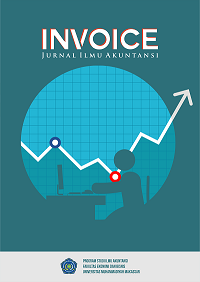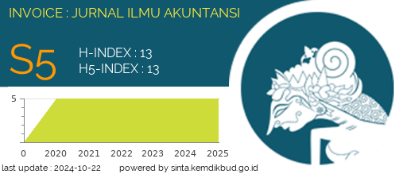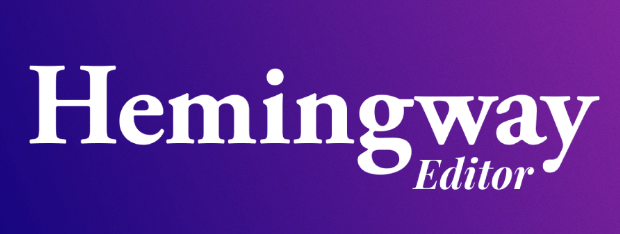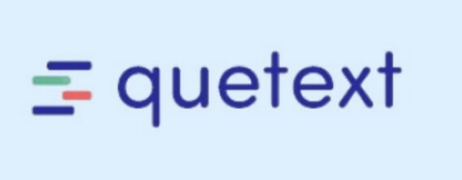Digital Financial Literacy and Financial Inclusion: Visualizing Knowledge Networks through Bibliometric Analysis
DOI: https://doi.org/10.26618/zwpcw895
Abstract
This study examines the intersection of digital financial literacy and financial inclusion by employing a bibliometric approach to map global research trends, key contributors, and thematic developments in the field. Data were retrieved from the Scopus database, covering publications from 2012 to 2025, and analyzed using Biblioshiny in the R environment. Results reveal a substantial increase in research activity after 2018, reflecting growing academic and policy attention to the role of digital literacy in advancing inclusive finance. India, the United States, and China emerge as the most active contributors, highlighting the global relevance of this issue across both developed and developing economies. Thematic mapping identifies financial literacy, digital financial services, education, empowerment, and fintech adoption as central topics driving the discourse. Network analyses further demonstrate strong international collaborations and an evolving research structure that connects digital technologies, financial behavior, and socio-economic development. Despite these advances, challenges remain in bridging the digital divide, particularly for marginalized groups with limited access to technological infrastructure and financial education. This study contributes by providing a comprehensive overview of the knowledge network on digital financial literacy and inclusion, offering insights for policymakers, educators, and researchers. Strengthening digital financial competencies, supported by inclusive policies and collaborative scholarship, is critical for ensuring equitable access to safe and sustainable financial services in the digital era.
References
Agbo, F. J., Oyelere, S. S., Suhonen, J., & Tukiainen, M. (2021). Scientific production and thematic breakthroughs in smart learning environments: a bibliometrik analysis. Smart Learning Environments, 8(1), 1–25. https://doi.org/10.1186/s40561-020-00145-4
Akpan, I. J., Soopramanien, D., & Kwak, D. H. (2021). Cutting-edge technologies for small business and innovation in the era of COVID-19 global health pandemic. Journal of Small Business and Entrepreneurship, 33(6), 607–617. https://doi.org/10.1080/08276331.2020.1799294
Alliance for Financial Inclusion. (2021). Digital Financial Literacy: Guideline Note. 45, 1–24. https://www.afi-global.org/publications/digital-financial-literacy/
Binoy, B. V, Naseer, M. A., Kumar, P., & Lazar, N. (2021). A Bibliometrik Analysis of Property Valuation Research. International Journal of Housing Markets and Analysis, 15(1), 35–54. https://doi.org/10.1108/ijhma-09-2020-0115
Chetty, K., Qigui, L., Gcora, N., Josie, J., Wenwei, L., & Fang, C. (2018). Bridging the digital divide: Measfile:///Users/irmakurnia/Downloads/jgrv9i4art9.pdfuring digital literacy. Economics, 12(1), 1–20. https://doi.org/10.5018/economics-ejournal.ja.2018-23
D.A.T., K., Azam, S. M. F., & Khalidah, S. (2020). The Impact of Financial Literacy on Women’s Economic Empowerment in Developing Countries: A Study Among the Rural Poor Women in Sri Lanka. Asian Social Science, 16(2), 31. https://doi.org/10.5539/ass.v16n2p31
Demir, A., Pesqué‐Cela, V., Altunbaş, Y., & Murinde, V. (2020). Fintech, Financial Inclusion and Income Inequality: A Quantile Regression Approach. European Journal of Finance, 28(1), 86–107. https://doi.org/10.1080/1351847x.2020.1772335
Donthu, N., Kumar, S., Mukherjee, D., Pandey, N., & Lim, W. M. (2021). How to conduct a bibliometrik analysis: An overview and guidelines. Journal of Business Research, 133(March), 285–296. https://doi.org/10.1016/j.jbusres.2021.04.070
Fauzi, F., Antoni, D., & Suwarni, E. (2020). Women entrepreneurship in the developing country: The effects of financial and digital literacy on SMEs’ growth. Journal of Governance and Regulation, 9(4), 106–115. https://doi.org/10.22495/JGRV9I4ART9
Imjai, N., Meesook, K., Somwethee, P., Usman, B., & Aujirapongpan, S. (2025). Exploring the impact of digital financial literacy to effective financial planning and control: Perspectives on competitiveness of Thai micropreneurs. Social Sciences and Humanities Open, 11(December 2024), 101307. https://doi.org/10.1016/j.ssaho.2025.101307
Kass-Hanna, J., Lyons, A. C., & Liu, F. (2022). Building financial resilience through financial and digital literacy in South Asia and Sub-Saharan Africa. Emerging Markets Review, 51. https://doi.org/10.1016/j.ememar.2021.100846
Li, T., Bai, J., Yang, X., Liu, Q., & Chen, Y. (2018). Co-occurrence network of high-frequency words in the bioinformatics literature: Structural characteristics and evolution. Applied Sciences (Switzerland), 8(10), 1–14. https://doi.org/10.3390/app8101994
Lim, S. H., Kim, D. J., Hur, Y., & Park, K. (2019). An Empirical Study of the Impacts of Perceived Security and Knowledge on Continuous Intention to Use Mobile Fintech Payment Services. International Journal of Human-Computer Interaction, 35(10), 886–898. https://doi.org/10.1080/10447318.2018.1507132
Lo Prete, A. (2022). Digital and financial literacy as determinants of digital payments and personal finance. Economics Letters, 213, 110378. https://doi.org/10.1016/j.econlet.2022.110378
Lusardi, A., & Mitchell, O. S. (2014). The economic importance of financial literacy: Theory and evidence. Journal of Economic Literature, 52(1), 5–44. https://doi.org/10.1257/jel.52.1.5
Olaleye, S. A., & Olaleye, E. O. (2022). The Imperative of Students and Teachers’ Well-Being in Finnish University: A Bibliometrik Approach. 1, 953–962. https://doi.org/10.21125/iceri.2022.0279
Omar, M. A., & Inaba, K. (2020). Does Financial Inclusion Reduce Poverty and Income Inequality in Developing Countries? A Panel Data Analysis. Journal of Economic Structures, 9(1). https://doi.org/10.1186/s40008-020-00214-4
Park, C., & Mercado, R. (2015). Financial Inclusion, Poverty, and Income Inequality in Developing Asia. SSRN Electronic Journal. https://doi.org/10.2139/ssrn.2558936
Rahman, M. Z., Ullah, F., & Thompson, P. (2024). Religion, personality traits and the nature of entrepreneurial activities: insights from Scottish Muslim entrepreneurs. International Journal of Entrepreneurial Behaviour and Research. https://doi.org/10.1108/IJEBR-01-2023-0074
Ravikumar, T. (2020). Financial Access Indicators of Financial Inclusion: A Comparative Analysis of SAARC Countries. International Journal of Intelligent Enterprise, 7(1/3), 28. https://doi.org/10.1504/ijie.2020.10026343
Sharma, S. (2024). Innovative Financial Inclusion Models: Lessons From Tulsipur Sub-Metropolitan City. Ocem-JMTSS, 3(2), 125–132. https://doi.org/10.3126/ocemjmtss.v3i2.67878
Yadav, M., & Banerji, P. (2023). A bibliometrik analysis of digital financial literacy. American Journal of Business, 38(3), 91–111. https://doi.org/10.1108/ajb-11-2022-0186
Downloads
Published
Issue
Section
License
Authors who publish with Invoice: Jurnal Ilmu Akuntansi agree to the following terms:
-
Copyright Ownership
The copyright of all articles published in this journal remains with the author(s). However, the authors grant Invoice: Jurnal Ilmu Akuntansi the right of first publication with the work simultaneously licensed under a Creative Commons Attribution 4.0 International License (CC BY 4.0). This license allows others to share, copy, redistribute, adapt, and build upon the work for any purpose, even commercially, as long as proper credit is given to the original author(s) and the source. -
Licensing and Access
Invoice: Jurnal Ilmu Akuntansi provides immediate open access to its content on the principle that making research freely available to the public supports a greater global exchange of knowledge. All published materials are available freely without subscription or payment and can be accessed, downloaded, and reused by any user provided that appropriate attribution is given. -
Permission for Reuse
For uses not covered by the CC BY 4.0 license, such as commercial reprints, translations, or any form of adaptation without clear attribution, users must obtain written permission from the editorial team. Requests for such permissions can be directed to the editorial office at: [invoice@unismuh.ac.id]. -
Plagiarism and Originality
Authors are responsible for the originality of their submissions. All articles are screened for plagiarism using appropriate tools before acceptance. Manuscripts found to contain unoriginal content or infringing materials will be rejected or retracted as per journal policy.














